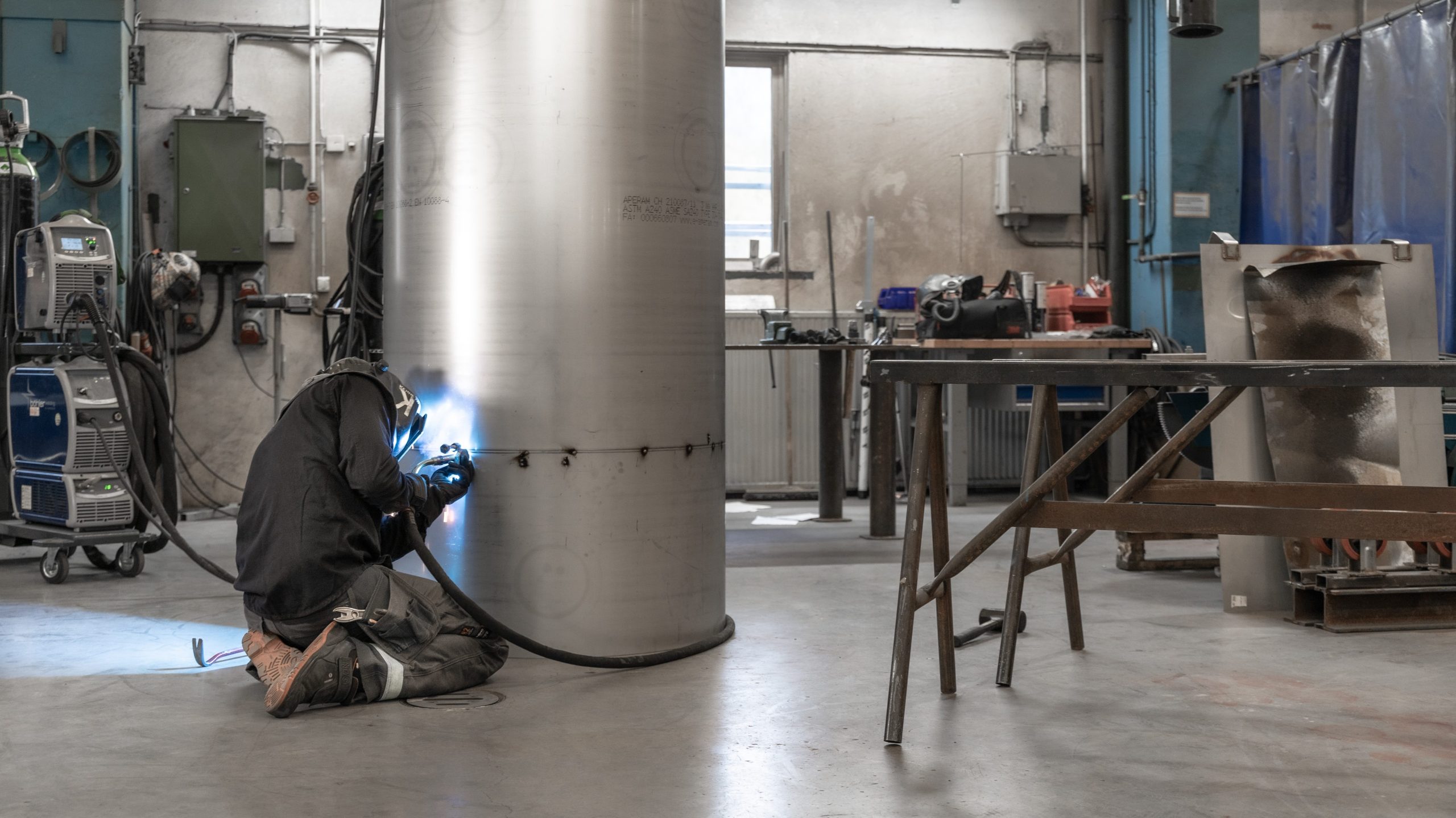
MIG welding, short for Metal Inert Gas welding, is a popular welding technique with a wide range of applications. In this in-depth article, we’ll explore everything you need to know about MIG welding, from its basics to its advantages, and how you can master this skill for various industries.
MIG Welding Basics: How It Works
In MIG welding, an electric arc is generated between a consumable wire electrode and the metal workpieces, melting both the wire and the base metals to create a strong joint. A shielding gas, such as argon or helium, is used to protect the weld pool from contamination by atmospheric gases like oxygen, nitrogen, and water vapor. This process ensures a clean and strong weld with minimal spatter.
So, how does MIG welding differ from other welding processes like TIG welding, stick welding, or flux-cored welding? The main difference is in the equipment and the use of a continuously fed wire electrode, as opposed to rods or tungsten electrodes. This makes MIG welding faster and more suitable for a wide range of applications, from automotive repairs to large-scale industrial manufacturing projects.
The Benefits of MIG Welding
MIG welding offers a variety of advantages, which make it a popular choice in the welding world. Some of these benefits include:
- Ease of learning: MIG welding is considered one of the easiest welding techniques to learn, making it a great starting point for beginners. With some proper welding training and certification, you’ll be ready to dive into the world of MIG welding in no time.
- Versatility: MIG welding can be used on a wide range of metals, including aluminum, stainless steel, and mild steel. This makes it suitable for various industries, including construction, automotive, and even art and sculpture.
- High productivity: The continuous wire feed in MIG welding allows for faster welding speeds, making it an efficient choice for large-scale projects.
- Clean and precise welds: The use of shielding gas helps to prevent contamination, resulting in clean and aesthetically pleasing welds with minimal spatter.
Safety First: Tips for Staying Safe While Welding
As with any welding process, safety is of utmost importance when practicing MIG welding. To ensure your well-being, follow these crucial safety tips:
- Wear appropriate safety equipment, such as welding helmets, gloves, and flame-resistant clothing.
- Always work in a well-ventilated area to avoid inhaling harmful fumes.
- Follow proper welding procedures and guidelines to minimize the risk of accidents and injuries.
- Stay informed about the importance of safety in welding and consistently update your knowledge of best practices.
MIG Welding in Action: Applications and Industries
MIG welding’s versatility and efficiency make it a popular choice for various industries. Some common applications include:
- Construction: MIG welding is used to create strong joints in structural steel components and other construction materials.
- Manufacturing: From heavy machinery to consumer goods, MIG welding plays a vital role in manufacturing a wide range of products.
- Automotive: MIG welding is extensively used in the automotive industry for repairs, fabrication, and customization of vehicles.
- Art and Sculpture: Many artists and sculptors utilize MIG welding to create unique metal artwork and installations.
MIG Welding Mastery: FAQs
- What materials can be welded using MIG welding?
MIG welding is suitable for a variety of metals, including aluminum, stainless steel, and mild steel. However, it’s not the best option for welding very thin materials or metals with high oxidation properties, like copper or brass. - Can beginners learn MIG welding easily?
- Yes, MIG welding is considered one of the easiest welding techniques to learn, making it an ideal starting point for beginners. With proper training and certification, anyone can learn the basics of MIG welding and start practicing this skill.
- What kind of shielding gas is used in MIG welding?
The most common shielding gases used in MIG welding are argon, carbon dioxide (CO2), and a mixture of both. The choice of shielding gas depends on the type of metal being welded and the desired weld properties. - What are some common MIG welding challenges?
Some common challenges faced by MIG welders include maintaining a consistent wire feed speed, selecting the right shielding gas, and dealing with weld spatter. However, with practice, experience, and proper training, these challenges can be easily overcome. - Is MIG welding suitable for outdoor use?
MIG welding can be used outdoors, but it’s essential to consider wind conditions, as the shielding gas can be blown away, compromising the weld quality. It’s recommended to use windbreaks or other protective measures when MIG welding outdoors.
